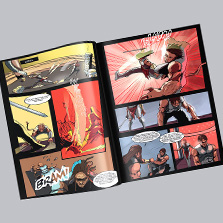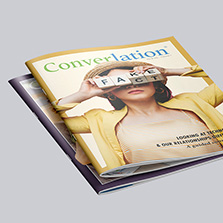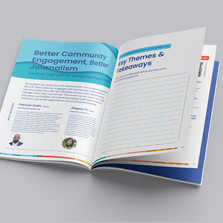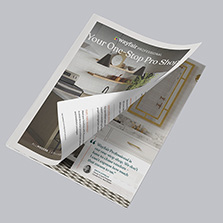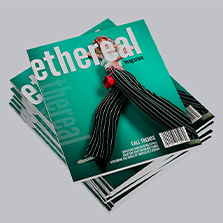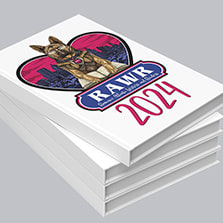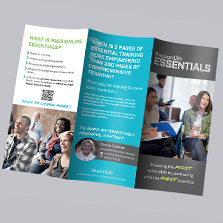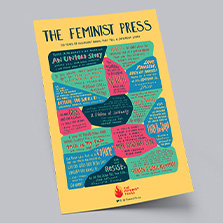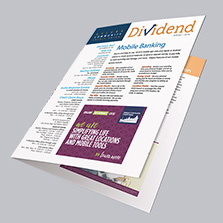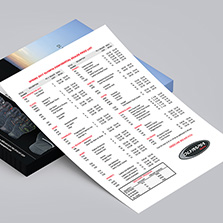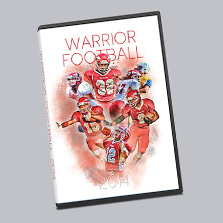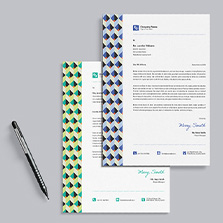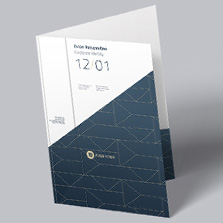
Behind the Print with Fusion Softball
In this episode of Behind the Print, we’re joined by James Pellem, co-director of Fusion Softball. With a devotion for his players, James walks us through how he uses print to set the members of the Fusion Softball up for success.
Below, you’ll find the transcript of our conversation, edited for clarity to ensure easy reading. If you want the full, authentic experience, make sure to check out the video attached below.
Connor: Welcome back to Behind The Print, where we feature industry leaders and uncover the creative minds and their businesses within the world of professional printing. Our mission is to give you inspiring, actionable ideas that elevate your projects and accelerate your path to excellence in profit and in print. On today’s episode, we’re joined by Fusion Softball co-director James Pellem. James, welcome to the podcast.
James: Thanks for having me. I’m ready to go.
Connor: Let’s dive right in. Tell us a little about yourself and what you do.

James: I’m 38. I coach travel softball, and for my day job I work in home health and hospice doing marketing. I spend a lot of time out in the community talking with doctor’s offices and hospitals, helping with referrals, and talking to patients about their goals and what is best for them. I have two kids, a 17-year-old daughter and a 9-year-old son. My daughter is a senior and she is going to play college softball, so I am wrapping my head around that. My son is super smart. He likes sports, but he is not big on going outside to sweat. I married my middle school sweetheart. We have been together for almost 20 years.
Connor: I cannot really blame your son for avoiding the humidity. Out here in Montana it can be a hundred degrees, but no humidity. It makes a difference.
James: Yeah, the humidity is not fun.
Connor: How did Fusion Softball start for you?
James: My daughter picked up a bat at five and I do not think she has put it down since. We started with our local rec league, just me and her out on the fields. One day we saw a travel team practicing. I liked how they did things. It looked fun, but serious, the kind of atmosphere that challenges you. We watched them, they invited us out, and my daughter loved being around the older girls. One thing led to another and I ended up coaching a team. Six years later I have been coaching ever since. It has been great.
Connor: Instead of typical clients, your world is built around teams. Tell me about the age groups you field and where print fits in.
“One day we saw a travel team practicing. I liked how they did things. It looked fun, but serious, the kind of atmosphere that challenges you. We watched them, they invited us out, and my daughter loved being around the older girls. One thing led to another and I ended up coaching a team. Six years later I have been coaching ever since. It has been great.”
James: Our organization fields teams from 8U to 16U, and I really lean on print for our recruiting-age kids. Recruiting has changed. There is less emphasis on high school ball in our region and more on travel ball. Because I work in marketing, I always ask how I would market against myself. What would bring more value to what we offer our athletes compared to other organizations? That question pushed us to rethink how we present our players.
We started with business cards for the girls. At camps, instead of handing coaches a roster sheet that gets tossed before they leave the park, the girls hand over a card that fits a wallet. I come home with stacks of business cards from my day job and I keep them, sometimes for years. We saw the same thing at tournaments. We would go back to a camp months later, the girls would offer a card again, and the coach would open a wallet and there was the first card, still in there. It worked because it is personal, it is professional, and it travels.

Connor: It is easier to put in a pocket, and it signals professionalism.
James: Exactly. We added QR codes to the cards and to everything we print for recruiting. A coach can scan and see what matters immediately. Each card links to a player’s Twitter or X, FieldLevel profile, our organization’s Facebook or the team page, and the player’s YouTube highlights. Coaches are in town for two- and three-day tournaments. They go back to a hotel at night and they will check out a recruit if you make it easy. The QR code gets them there in seconds.
Connor: You also mentioned printed programs, like what you pick up at a pro game.
James: Right. Instead of a roster sheet, we started creating programs. You hear “programs” as soon as you walk past the ticket booth at a Braves game or a college game. We leaned into that format and created what we call recruiting guides. We put them out at every game for coaches to grab. Now coaches ask us at the start of the season if the recruiting guide is finished. We email the template and then we print. It adds real value compared to a basic list of names.
Connor: What sorts of challenges do you face with your teams, especially around recruiting?
James: The big one is alignment. We have to make sure our team standards match the girls’ goals. We refine our schedule to get into the right tournaments. Where we stand now, if you want to play junior college or Division II or Division III, we are in a good spot to help you. The challenge is helping players and families set realistic targets. Everybody wants the state universities in Alabama, Oklahoma, or Tennessee. That is natural. But education has to be the priority. It is not about Facebook statuses or parents living through their kids. It is about what is right for the athlete and the family.
Connor: That lines up with what I saw on your website. Fusion looks like more than sport. You put heavy emphasis on values, work ethic, and earning success.

James: Especially with the older, recruiting-age girls, we want them to become independent young women. Softball is the vessel we use to teach things like discipline. Self-discipline is even better. When people hear discipline in sports, they think punishment. That is not what we do. Everyone goes to practice. What separates you is what you do outside of practice. Schools are giving thousands in scholarships. Why do you get it instead of the girl two hours away, or even the teammate standing next to you? It comes down to work ethic.
We talk a lot about standards. I always ask, are we a team of rules or a team of standards? Rules are for people who do not follow directions. You break a rule, there is a punishment. Standards are commitments. We set a goal, we make a plan, and we hold each other to it. If you do not do the work, you do not get the result. That is the consequence. And it affects your teammates, not just you.
“Softball is the vessel we use to teach things like discipline. Self-discipline is even better. When people hear discipline in sports, they think punishment. That is not what we do. Everyone goes to practice. What separates you is what you do outside of practice. Schools are giving thousands in scholarships. Why do you get it instead of the girl two hours away, or even the teammate standing next to you? It comes down to work ethic.”
Connor: How has that approach played out when your athletes get to college?
James: I just finished my first round of recruiting where three of my 18U girls graduated and went on to play in college. All three called to say thank you. They see why we practiced the way we did. They had college practice and it was hard, but they were ready. That translates to life. You are not excited every single day to go to work. But you built discipline. If you do not show up, your family does not eat. So we teach prioritizing, planning, and sticking to commitments.
For me that means I do not practice on Fridays. My girls are in high school and they want to go to football games. They are giving me their weekends already. I want them to still have a normal life. I learned this difference coaching boys and girls. Boys play baseball to be happy. Girls need to be happy to play softball. If I can give them back a Friday night, I will.

Connor: You are instilling work ethic and realistic expectations, and you are also protecting joy in the process.
James: That is the aim. Our girls work very hard. I would put them up against just about anyone for dedication. Softball is growing, but it is still overlooked. Success demands sacrifice. I looked the other day and only 6.7 percent of high school athletes go on to play in college. I get asked why. My opinion is that only around 6.7 percent of kids are willing to make the sacrifices. You will miss school dances, proms, homecomings, birthday parties. Are you willing to do that? A lot of very successful people look a little weird to others, because they do things and give up things that average people will not.
Connor: You have also built a nonprofit that puts resources into the girls rather than into overhead. How does that structure set you apart?
“I looked the other day and only 6.7 percent of high school athletes go on to play in college. I get asked why. My opinion is that only around 6.7 percent of kids are willing to make the sacrifices. You will miss school dances, proms, homecomings, birthday parties. Are you willing to do that? A lot of very successful people look a little weird to others, because they do things and give up things that average people will not.”
James: We do not run Fusion like a typical business. Traditionally our coaches do not get paid. Lately a few college coaches have reached out about joining us, and if they do not have a kid on the team we are talking about possible compensation for their time. But historically, the money goes back into the organization for the girls. When we do fundraisers, each team decides how to use the funds. I allocate proceeds to each girl until her fees are paid. Anything extra either goes to the team for needs like tournament entry, or it rolls forward into an account to reduce the next season’s fees. Compared to programs that are equally competitive, our fees are relatively low. The nonprofit status helps us collect donations that go right back to the kids. We do not do this for the money.
Connor: What milestones are you most proud of?
James: We have a 100 percent success record of getting kids who want to play college softball the opportunity to play college softball. From our earliest graduating classes up through my most recent team, the offers have been there. Some girls later chose not to play because of injuries or a change of heart, and that is their decision. But the opportunity and scholarship support were on the table. We have also had girls start at junior colleges and then move up to bigger schools. Our main goal is to help them get an education and come out as debt-free as possible. My partner Jeremy still talks about paying his student loans. We do not want that for these kids if their talent and work ethic can help carry the load.
Connor: Any obstacles that hold Fusion back from doing even more?
James: Not many. A larger indoor facility would be nice for weather days, but it is not necessary for what we do. Scheduling fields can be a hassle. There is a disconnect in some places between high school coaches and travel ball. We support all our local high schools and we want every girl in our program to win a state championship with her school. I even put together a printed trifold that explains who we are, what we represent, and how we support high school programs. I delivered it to schools as an olive branch. We have bought outfield fence signs that say Fusion supports that specific school and we add our players’ names, then end with the line that we support their program. That kind of outreach, often through print, helps bridge the gap.
Connor: It sounds like community is part of your DNA.
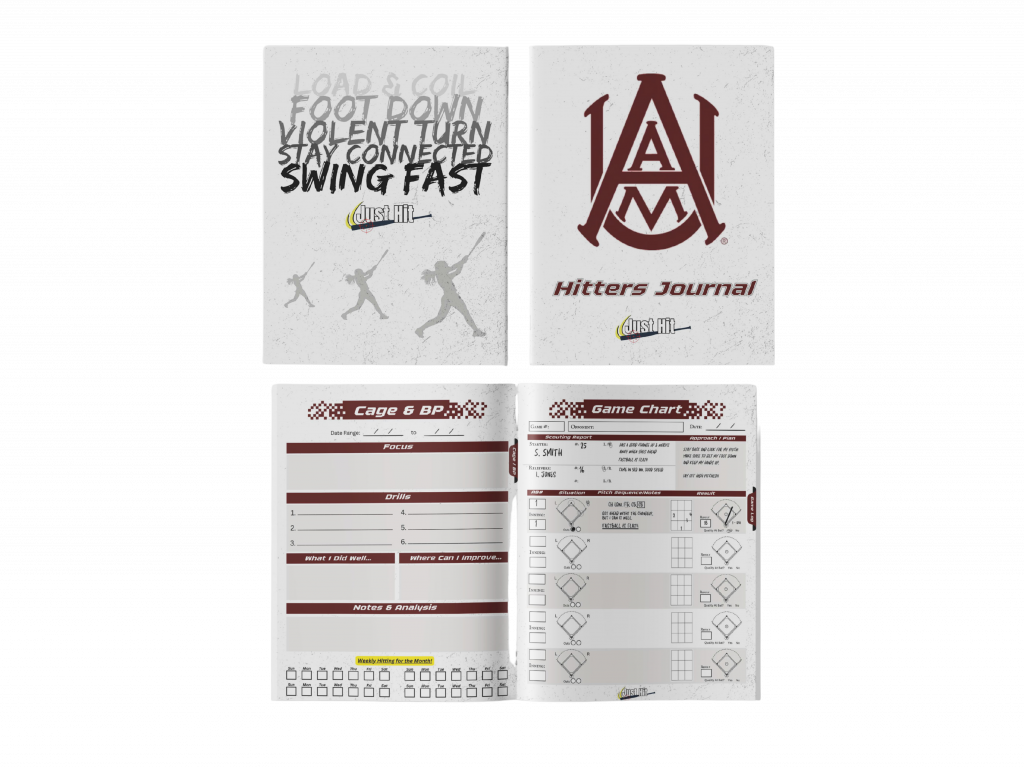
James: Absolutely. Because I work in home health and hospice, I see the need firsthand. I take our girls to a local memory care community. They paint fingernails, visit with residents, play music, and play bingo. Some of those folks do not have family visiting. Being there matters. We have even helped host last-chance proms. Giving back is not just an idea we print on a brochure. We do it from 8U through 18U.
Connor: So sort of a different question, if you had a completely free day, no obligations, how would you spend it?
James: I am a child at heart. Disney. I have only been once, but there is something about walking in and leaving your cares at the door. I love to travel. I have threatened my family more than once with a next-day plane trip to New York or California. They are not always as quick to jump as I am, but I love to go.
Connor: Same here. One thing I like about Montana is there is always someplace worth going.
James: That is the truth.
Connor: For listeners who want to connect, donate, or collaborate, what is the best way to reach you?
James: Facebook is the easiest, Fusion Fastpitch Organization. My teams are Fusion 2026 or Fusion 07, and the new team I just started is Fusion 2028, with freshmen and sophomores, 2028 and 2029 grads. On Twitter, look for Fusion 2026 underscore 2028. All our contact info is there. Our website is fusionfastpitch.org.
Connor: Before we wrap, anything you want to add about working with print vendors?
James: You all have been super easy to work with. The website is easy to navigate. Communication is fantastic. I do most of our graphics, but for books, cards, and anything I can run through you, I am going to use you. Your prices are tough to beat, and shipping is fast. I have two projects arriving today.
Connor: We appreciate you printing with us and for walking us through how Fusion builds opportunity. Thank you for joining us, and thanks to our listeners for exploring the artistry and innovation of the printing world. Remember, build a strong vision, match it with the right strategy, and use print to amplify your message. If you enjoyed today’s episode, grab a sample pack from PrintingCenterUSA and share our show with a friend. Until next time, keep the creative sparks flying, and remember, there’s always more to discover behind the print.





